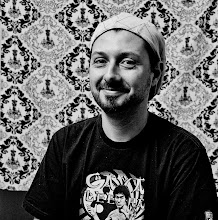


Since I also don't usually use, or do a color study, I got to make sure I know exactly what my limited palette can produce - 10 to 13 colors palette divided in Basic transparents, Basic staining, 4 reds, 2 yellows 3 browns, 3 blues and Payne's Gray. Don't worry so much with correct pigment names or formula. Just make sure you always place it in the same position on the palette and learn what to get out of them.

When doing skin tones there is no formula (HATE when people say: Is just a little bit of red+yellow and some blue: thats why your painting sucks) Skin tone is hard and a lot of time goes into getting it right. Study Frank Frazetta's work.
Once I get my background about mid tone, it is time to start on the foreground. When doing the figure it's important to add thin transparent layers and wait for it to try completely before adding the next. I work on getting the torso about mid tone first and worry about the head last. Since the head is the focus point, I want it to have the highest contrast - and that's why painting brunettes is way easier, folks!
Contrast is what makes or breaks a painting. Once you reach mid tone just about everywhere in the piece, it's time to rework the background with dark tones, detail the head making sure skin tones are matching throughout the painting and that the light source is even as well.

The final step is to add highlights. I dont like using masking too much so I use gouache or gesso (very little, please!). I also do a lot of lifting which gives a nice texture - and that is why is important to use good quality paper.
Questions? info@grapesodastudio.com
Commissions? info@grapesodasudio.com



No comments:
Post a Comment